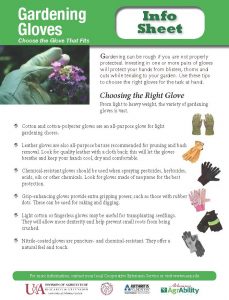– Garth Ruff, Agriculture and Natural Resources Extension Educator, OSU Henry County Extension (originally published in the Ohio Farmer on-line)

“The customer is always right.” If they want to purchase cattle only from feeders with a BQA certification, then to access their market that’s what we’ll need to do.
Things are at a high pace in Ohio’s Extension offices as we move towards spring with not only agriculture programming but 4-H as well. One of the programs that combines both the agriculture and youth is Quality Assurance, a program required for youth in order to exhibit livestock projects at the various fair and expositions across the state. The youth QA program began twenty some years ago in Ohio as the result of some food safety concerns regarding exhibition livestock.
Introduced in 1989, Pork Quality Assurance was designed to help pig farmers and their employees use best practices to promote food safety. The pork packing sector bought into the program and now requires producers to be certified in Quality Assurance in order to send their pigs to market. It is a pretty simple model, having the certification card for quality assurance is a producer’s “ticket” to market access.
I think this information and starting the discussion about the role and value of quality assurance is important, as similar requirements are coming in the not so distant future to the beef industry. Customers of the packing industry, being retailers and restaurants including the likes of Wendy’s, are requiring that by 2019 any beef product that enters their supply chain must come from producers certified in Beef Quality Assurance (BQA).
The average beef producer may wonder why this is important. I say the average beef producer, because the average cow-calf producer in Ohio is about 56 years old and has roughly 17 cows. For smaller producers it may be hard to see the value of participating in the Beef Quality Assurance program. In order to see the returns we must understand who our customers are.
We have all heard the saying, “the customer is always right,” and while this saying tends to be true, it can be a tough sell to some livestock producers, especially in the beef industry. When we consider the structure of the beef industry with its many diverse stages of production, identifying proper producer-customer relationships can become complicated. This is an issue pork, poultry, and even dairy to an extent have overcome via integration and consolidation over the past couple of decades.
As livestock producers, we tend to confuse the role of beef consumer and our actual customer. The consumer being the end user is the person who purchases meat from the retailer, cooks, and then eats (consumes) that product. In the beef industry, often our customer is not the consumer, except in a direct marketing scenario.
Simply defined, a customer is one that purchases a commodity or service. Using that definition, the customer purchasing feeder cattle is typically a feedlot or backgrounder. For a feedlot and many of the farmer-feeders, here in Ohio their customer is the meat packer. This relationship between the meat packer and the cattle feeder can be one of the most dynamic in agriculture.
While not all packers have implemented the specification for BQA certified cattle as of yet, having access to supply chains such as Wendy’s and Tyson only increases the opportunities for the beef you produce to reach a greater number of consumers. It is likely a forgone conclusion that at some point all of the major packers will require BQA Certification, similar to the pork industry.
In the case of food, “the customer is always right,” as they determine whether producers have access to the marketplace. Without market access where do you go with your cattle and what is the cost of not having complete market access? Both are questions beef producers need to consider going forward.
In an effort to address these questions and provide BQA certification to producers, this winter the OSU Extension Beef Team has been hosting the program, Increasing Market Access for Ohio’s Feeder Calves. The goal of the program is to address factors that impede market access, and practices that influence the profitability of the beef enterprise. The program is being followed with BQA Certification. Contact your local OSU Extension office to find a 2018 Ohio Beef School or BQA Certification near you
 Peggy Hall, Asst. Professor, OSU Agricultural & Research Law Program discusses a multitude of legal issues facing Ohio’s farmers at Monday night’s Agronomy School.
Peggy Hall, Asst. Professor, OSU Agricultural & Research Law Program discusses a multitude of legal issues facing Ohio’s farmers at Monday night’s Agronomy School.
























